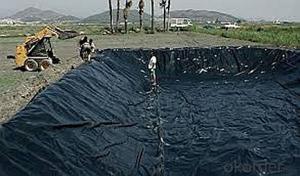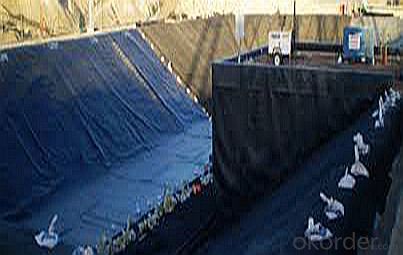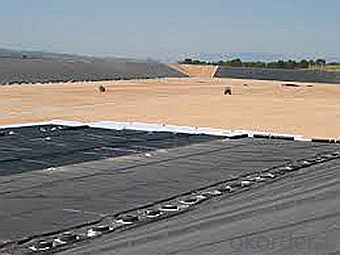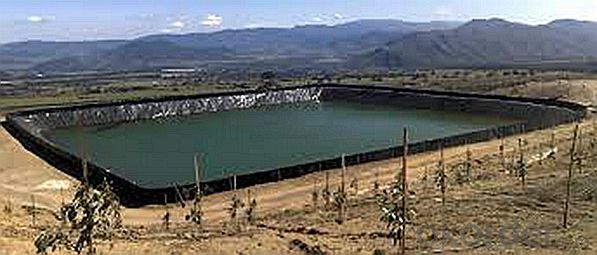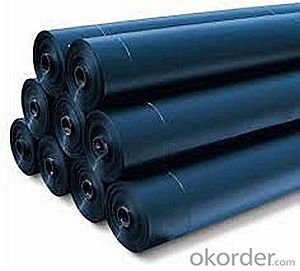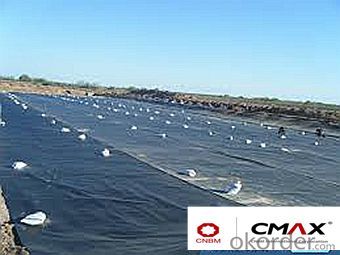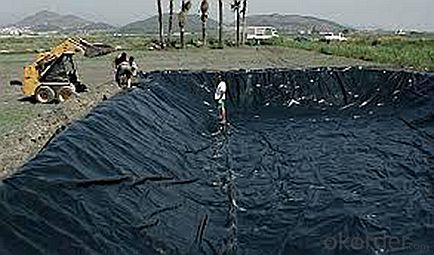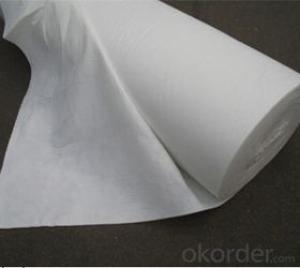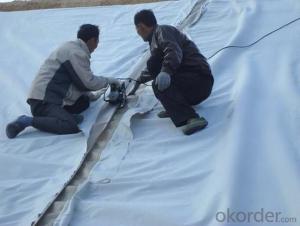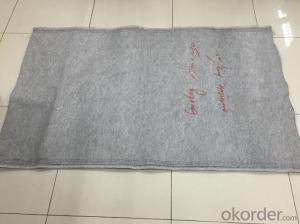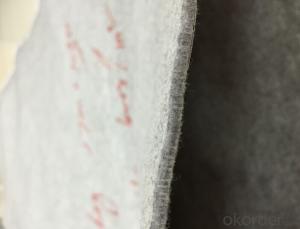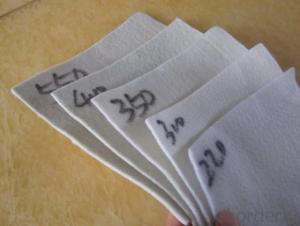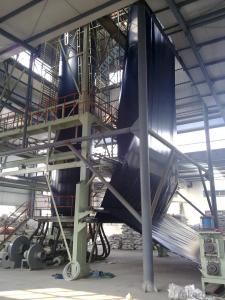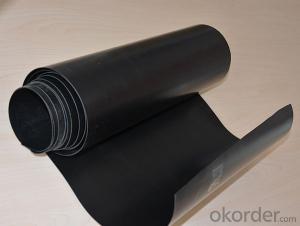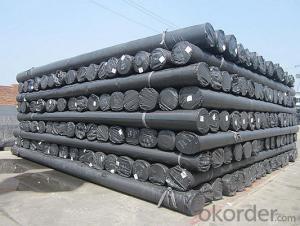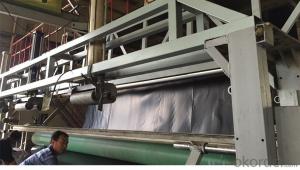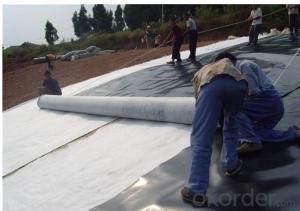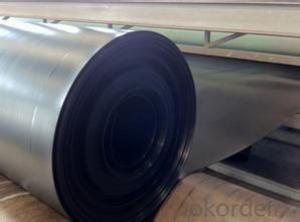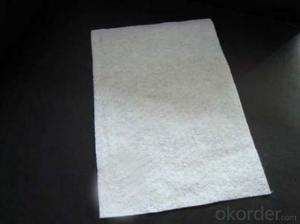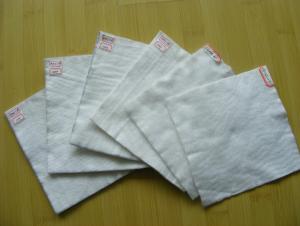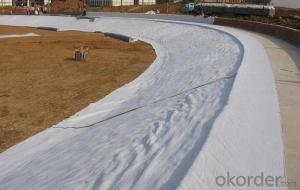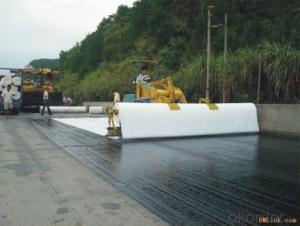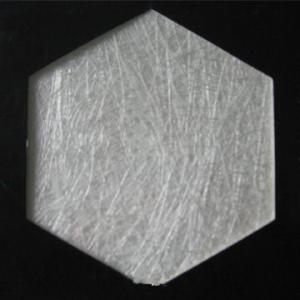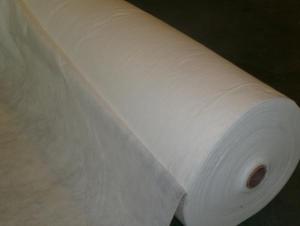Arena Geotextiles Linear Low-Density Polyethylene (LLDPE) Geomembrane for Agriculture
- Loading Port:
- China main port
- Payment Terms:
- TT OR LC
- Min Order Qty:
- 1000 m²
- Supply Capability:
- 1000000 m²/month
OKorder Service Pledge
OKorder Financial Service
You Might Also Like
Specification
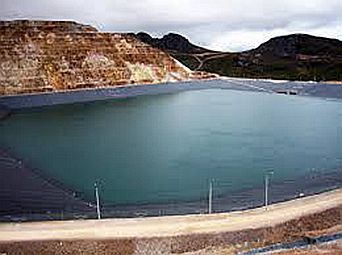
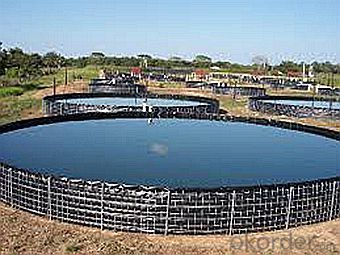
Technical craft:
The HDPE geo-membrane is produced by a method of three layer co-extrusion model. The raw material is processed at 200 by fusing and coextrusion, whose basic properties are kept during the producing process.
Material 100% virgin HDPE with UV trested
Weight 130gsm to 350gsm or as your requirement
Color black or as your requirement
Width any meter as your requirement
Length any meter as your requirement
Delivery Time 7 days if we have in stock or within 20 days after the order of 20ft
UV YES
MOQ 1000 suqare meters
Terms of payment LC,TT,West union,Paypal,Cash
Supplying capacity 100 tons/month
Packing pack in roll or in bale or as your requirement
Packaging & Shipping
Packing: PLASTIC FILM INSIDE, AND WOVEN BAG OUTSIDE
Shipping: About 15 days after receipt the deposit
geotextile fabric
permeability,filtration,easy for construction
ISO and CE certificate
Good quality and competitive price
Our Service
Quality assurance
1.On a regular basis or as per your request,we entrust national testing agencies to conduct quality inspections
2. Strictly in accordance with the ISO9001-2008 international quality system standard,we monitor and manage the whole process throughout production,quality testing,and measurement to ensure product quality
3. For quality-related construction delay or substandard construction(except for damage or losses due to customer’s responsibility or irresistible natural disasters),we have refunding,replacement,and repair services.We will respond to customers’ feedbacks on quality issues within 24 hours.
FAQ:
Q: What kind of payments does jenor support?
A: T/T, L/C, Cash are accepted.
Q: Do you charge for the samples?
A: Accordeing to our company policy, the samples are free, we only charge the freight fee. And we will return the freight fee during the next order.
Q: Can you produce according to customers' design?
A: Sure, we are professional manufacturer, OEM and ODM are both welcome.
Q: Do you have other products?
A: Yes, please check the pictures:
- Q: Are geotextiles suitable for use in geocell mattress systems?
- Yes, geotextiles are suitable for use in geocell mattress systems. Geotextiles have excellent filtration and separation properties, which help in preventing soil erosion and maintaining stability within the geocell system. They also provide reinforcement and allow for the proper drainage of water, making them an ideal choice for use in geocell mattress systems.
- Q: How do geotextiles contribute to groundwater recharge projects?
- Geotextiles contribute to groundwater recharge projects by providing a permeable barrier that allows water to infiltrate into the ground while preventing soil erosion and sedimentation. They act as a filter, allowing water to pass through while retaining fine particles, thus enhancing the recharge of groundwater aquifers.
- Q: How do geotextiles help in preventing shoreline erosion?
- Geotextiles help in preventing shoreline erosion by acting as a barrier against soil erosion caused by water movement. They are placed along the shoreline to stabilize the soil, reduce wave energy, and prevent sediment from being washed away. The geotextiles trap sediment and allow water to pass through, which helps to build up and maintain the beach or shoreline, ultimately protecting it from erosion.
- Q: How do geotextiles help in soil stabilization?
- Geotextiles help in soil stabilization by acting as a barrier between soil layers, preventing erosion and promoting the consolidation of the soil. They enhance soil strength, reduce soil settlement, and improve drainage, ultimately ensuring better stability and longevity of structures built on or with the support of the soil.
- Q: Geotextile is used to do anything
- Geotextiles have multiple varieties, there are a variety of uses, different varieties have a different emphasis on different functions. Woven geotextile, or geotextile, can be used for foundation treatment in the reinforcement and isolation and filtration. Non-woven geotextile, mainly used for foundation treatment in the filter and isolation. Can also be used in other projects in the filter. Nonwovens for the example of the filter: now in the municipal engineering around the Yinjing, often because the surrounding groundwater into the Yinjing will take away part of the soil, resulting in the loss of soil around the wells, the results in the perimeter around the wells There is a collapse phenomenon, if the circle around the perimeter of the laying of non-woven geotextile, the side can play a role in filtering, so that groundwater can flow into the Yinjing, but the soil will not lose the purpose of the perimeter around the soil There will be no collapse of the phenomenon.
- Q: How are geotextiles tested for durability?
- Geotextiles are tested for durability through various methods, including exposure to environmental factors such as sunlight, moisture, and temperature changes. Additionally, they undergo mechanical tests like puncture resistance, tear strength, and tensile strength evaluations. These tests help determine the geotextile's ability to withstand long-term use and maintain its structural integrity in different applications.
- Q: Is there a coinage between the embedded pipeline and the gravel blind ditch? Also on the backfill plant how to set the quota? Also ask the master advise! More
- You can go to the civil online forum to ask questions, there are a little more professional.
- Q: In the cofferdam construction process, geotextile materials after entering the need to arrange sampling test? Is there a specification? If the arrangements for testing, is to do physical experiments, or do chemical experiments, or do? More
- On the use of geotextile material, depending on whether the design requirements on the use of drawings, if required to use the method must be taken in the sampling inspection, the most commonly used two geotextiles GB / T-2008 is filament spunbond acupuncture Non-woven geotextile, GB / T-1998 is staple acupuncture non-woven geotextile, the general arrangements for testing are to do physical and mechanical properties (dynamic perforation, per unit area of quality, thickness, wide strip stretch, trapezoidal tear) other indicators Not mandatory
- Q: Geotextile filter layer set which quota
- Filter cloth, monofilament filter cloth, polypropylene filter cloth, nylon green monofilament
Send your message to us
Arena Geotextiles Linear Low-Density Polyethylene (LLDPE) Geomembrane for Agriculture
- Loading Port:
- China main port
- Payment Terms:
- TT OR LC
- Min Order Qty:
- 1000 m²
- Supply Capability:
- 1000000 m²/month
OKorder Service Pledge
OKorder Financial Service
Similar products
Hot products
Hot Searches
Related keywords





